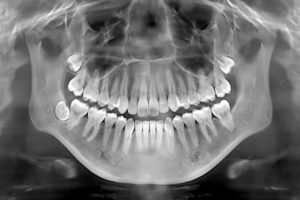X-Rays: Is There Really Cause For Concern?

Would you sacrifice a complete picture of your dental health in order to bypass X-rays? If you’re struggling to decide, you’re not the only one! Radiation concerns are giving trypanophobia (fear of needles) a run for its money around the dentist’s office, but skipping this important step in your checkup could be a costly gamble.
Before letting your X-ray fears get the better of you, know the facts about what’s really at stake, the true level of risk you face, and additional measures you and your dentist can take to play it safe without having to forfeit critical dental information.
The Importance of X-Rays
Whether it’s a routine checkup or an emergency visit, X-rays play a crucial role in understanding your dental situation. Many oral health issues lie just beneath the surface, and simply can’t be seen without an X-ray. These include:
- Cavities or developing tooth decay, either under an existing filling or between teeth
- Changes in hard and soft tissues that may prove problematic over time
- Injury or damage to the jaw bone, which could affect chewing and/or speech
- Spreading periodontal disease or local infections beneath your gums
- Symptoms of oral cancer, as well as abscesses, tumors and cysts
- Impacted teeth or other tooth abnormalities that may require surgery
Ultimately, X-rays are integral to thorough, accurate and effective dental care.
Your Level of Risk
Understandably, radiation exposure can be concerning, but the dosage level involved with X-rays is minimal. A study cited by the American Dental Association reflects that standard, bitewing images of your back teeth only result in 0.005 millisieverts (mSV) of radiation exposure, while radiation the body is naturally exposed to from your everyday environment amounts to 3.2 mSV a year.
Thanks to technology, digital X-rays are now possible, and further reduce your risk. If X-rays make you nervous despite the facts above, it may be worth seeking a dentist who has transitioned to this newer method.
The ALARA Principle
Dentists share your concern and do everything in their power to uphold your safety. To that end, a guideline known as the ALARA Principle has been set; ALARA stands for “As Low As Reasonably Achievable.” Dentists follow this approach for maximum protection against radiation exposure, and it includes techniques such as:
- Covering the patient with a leaded apron, as well as a thyroid collar when possible
- Applying the fastest speed setting, whether X-rays are film or digital
- Decreasing the size of the X-ray beam to match the image receptor when possible
- Following standard protocol when it comes to exposure and processing
Based on factors such as your dental history, the last time you had X-rays, and your current situation, your dentist will determine whether the procedure is necessary.
Talk To Your Dentist Beforehand
Have a frank and open discussion with your dentist at the start of each visit to ensure mutual understanding and agreement on the approach to your care. Sharing health news such as pregnancy, ongoing or recent radiation exposure, or surgery may alter your dentist’s recommended treatment plan.
Sources:
Cohen, E. (2011, September 15). Are dental X-rays dangerous? Retrieved June 7, 2015, from http://www.cnn.com/2011/09/15/health/living-well/dental-x-rays/
Dental Radiographs Benefits and Safety. (2011). Retrieved June 7, 2015, from http://www.ada.org/~/media/ADA/Publications/Files/for_the_dental_patient_sept_2011.ashx
Learn More About Dental X-Rays. (n.d.). Retrieved June 7, 2015, from http://www.webmd.com/oral-health/guide/dental-x-rays
X-Rays. (n.d.). Retrieved June 7, 2015, from http://www.ada.org/en/member-center/oral-health-topics/x-rays